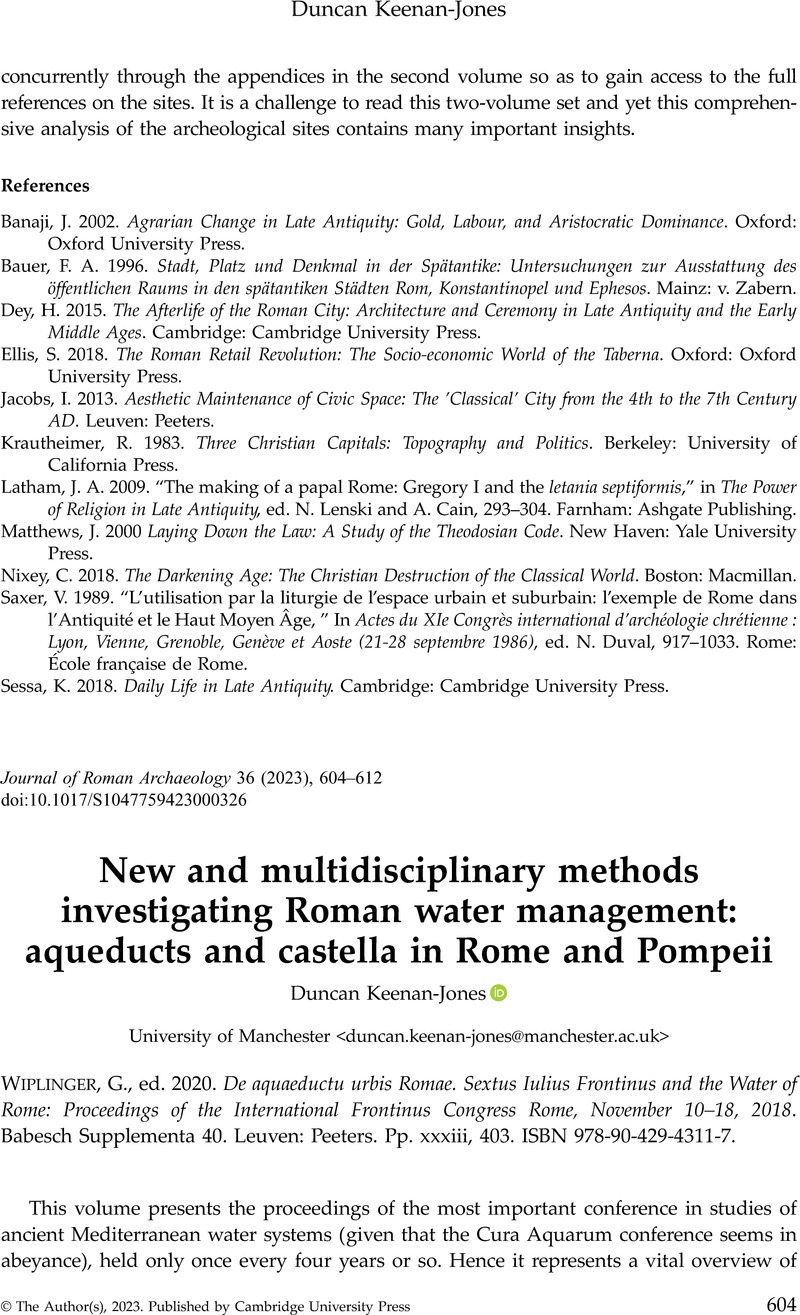Keenan-Jones, D. C.,
Foubert, A.,
Motta, D.,
Fried, G.,
Sivaguru, M.,
Perillo, M.,
Waldsmith, J.,
Wang, H.,
Garcia, M. H., and
Fouke, B. W..
2014. “
Hierarchical stratigraphy of travertine deposition in ancient Roman aqueducts.” In
Lazio e Sabina 10 (Atti del convegno “Decimo incontro di studi sul Lazio e la Sabina”, Roma, 4–6 giugno 2013), ed.
Calandra, E.,
Ghini, G., and
Mari, Z.,
293–95. Lavori e Studi della Soprintendenza per i Beni Archeologici del Lazio 10.
Rome:
Edizioni Quasar.
Google Scholar 